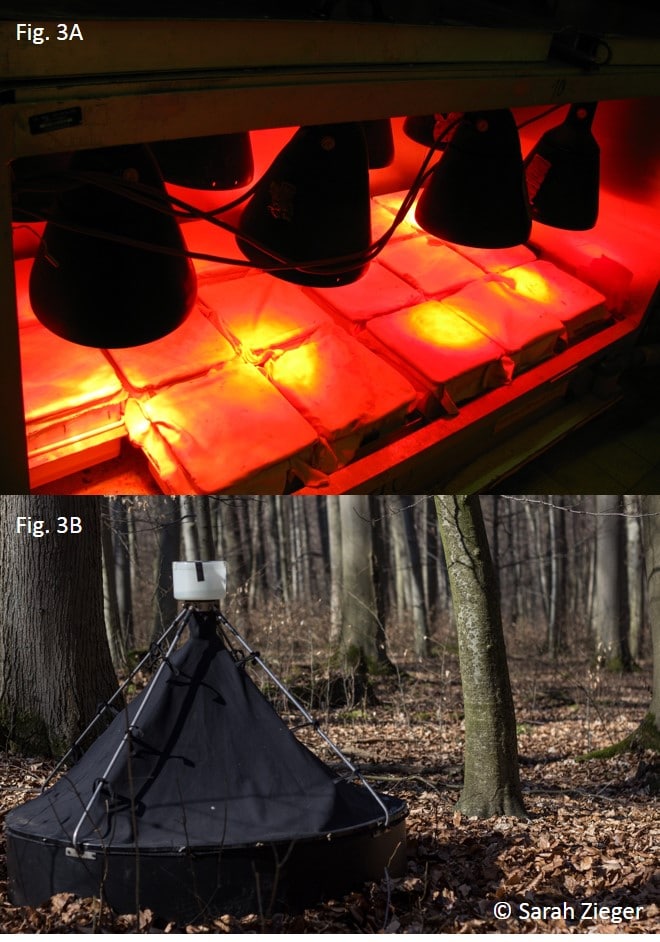Veränderungen in der Struktur von Boden-Nahrungsnetzen mit der Intensität der Nutzung von Waldökosystemen

Bodennahrungsnetze sind ein essentieller Bestandteil terrestrischer Ökosysteme und eng mit dem überirdischen System verknüpft. Bodentiere spielen dabei eine besondere Rolle als (i) Zersetzer, bei der Umsetzung von totem pflanzlichen und tierischen Material, (ii) als Konsumenten von Wurzeln, mit direkten Folgen für das Pflanzenwachstum, aber auch als (iii) Bodenarchitekten, indem sie durch Grabtätigkeiten die Bodenstruktur und somit die Aufnahme von Wasser und Nährstoffen verbessern. Trotz dieser vielfältigen und wichtigen Dienstleistungen für den Boden ist relativ wenig über die Tiere und ihre Interaktionen bekannt, was vor allem in ihrer geringen Größe, ihrer hohen Diversität aber auch in den Schwierigkeiten sie zu beobachten begründet liegt.
In diesem Projekt verfolgen wir zwei Ziele: Wir klassifizieren die Tiergemeinschaften der Streu-und Bodenschicht in unterschiedlich bewirtschafteten Wäldern und dokumentieren ihre Veränderungen über die Zeit. Aufbauend auf diesen Ergebnissen untersuchen wir die Nahrungsbeziehungen von Schlüsseltaxa, ihre trophischen Positionen und ihre basalen Nahrungsressourcen.
Wir untersuchen die Schwankungen von Bodentiergemeinschaften zwischen den Jahren. Diese Schwankungen entstehen durch Veränderungen von abiotischen (Temperatur, Niederschlag) und biotischen Bedingungen (Veränderung von Konkurrenzstärke, Räuberdruck).
Hypothesen
- Die Zusammensetzung und trophische Struktur ändert sich nur wenig mit der Zeit, und Unterschiede zwischen den Waldnutzungstypen bleiben relativ konstant.
- Zeitliche Schwankungen in der Abundanz nehmen mit Körpergröße und Höhe der trophischen Ebene zu
Methoden
Bodentiere lassen sich in Makrofauna (Abb. 1) und Mesofauna (Abb. 2) einteilen, die mittels Hitzeextraktion (Abb. 3A) aus dem Boden und der Streu extrahieren werden. Regenwürmer werden mittels Senflösung aus dem Boden extrahiert. Die Diversität, sowie Abundanz und Biomasse wichtiger Bodentiertaxa werden erfasst.
Mikroorganismen sind wichtige Bestandteile der Basis des Bodennahrungsnetzes. Daher wird die mikrobielle Biomasse mittels der Substrat-induzierten Atmung (SIR) bestimmt sowie das Fettsäuremuster bestimmt, was Aussagen über die mikrobielle Gemeinschaft zulässt.
Dipterenlarven sind ein wichtiger Bestandteil des Bodennahrungsnetzes. Leider ist sehr wenig über die Nahrungspräferenzen und ihre Rolle im Zersetzersystem bekannt. Wir untersuchen die Auswirkungen von unterschiedlich genutzten Wäldern auf ihre Artzusammensetzung und trophische Struktur.
Hypothesen
- Ähnlich wie bei den Meso- und Makrofauna steigt die Abundanz der Dipterenlarven mit zunehmendes Humusdicke an, während die Waldnutzungsform zu geringen Änderungen führt.
- Die trophische Position von Dipterenarten ändert sich mit Humusdicke, aber wenig mit der Waldnutzungsform.
Methoden
Wir verwenden Boden-Photoeklektoren (Abb. 3B) um die frisch geschlüpfte Dipteren zu sammeln. Die Signatur der stabilen Isotope der Individuen spiegelt dabei die trophische Position der Larve wieder.















